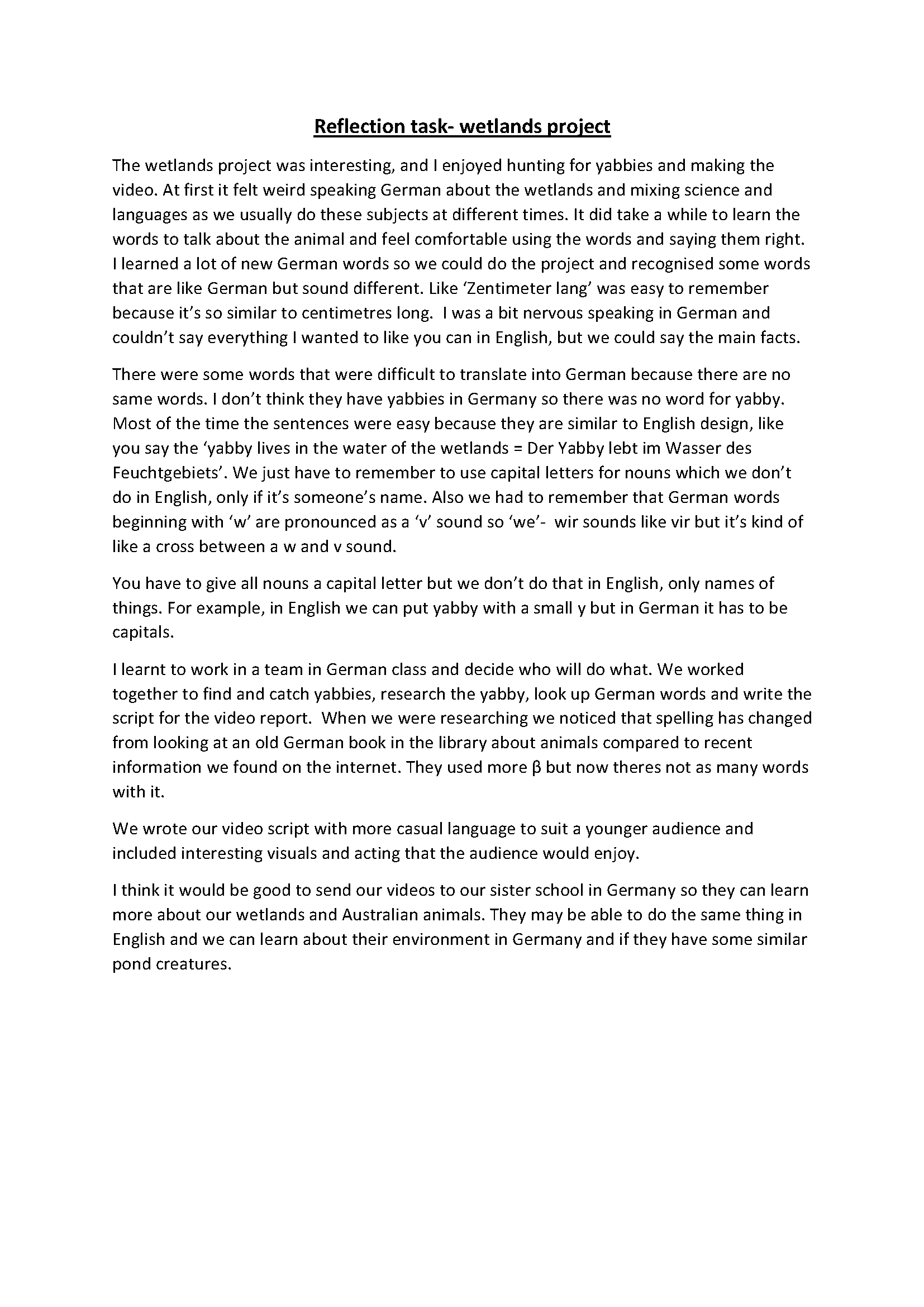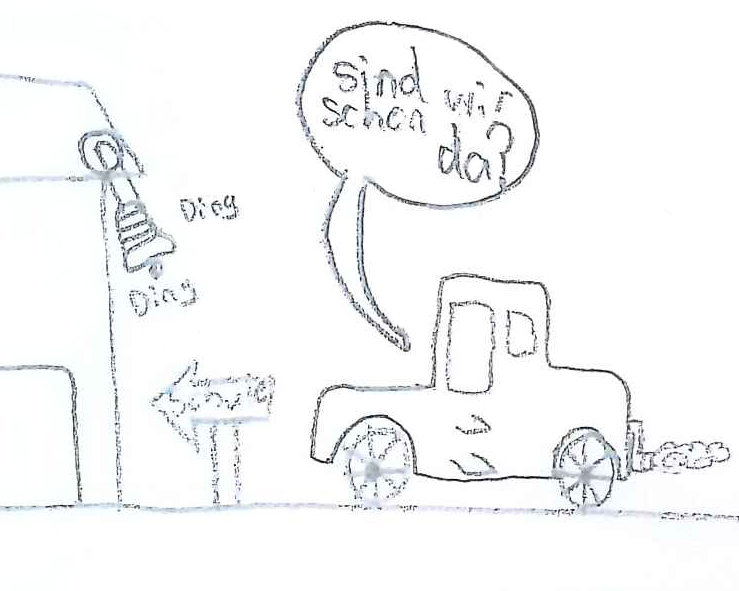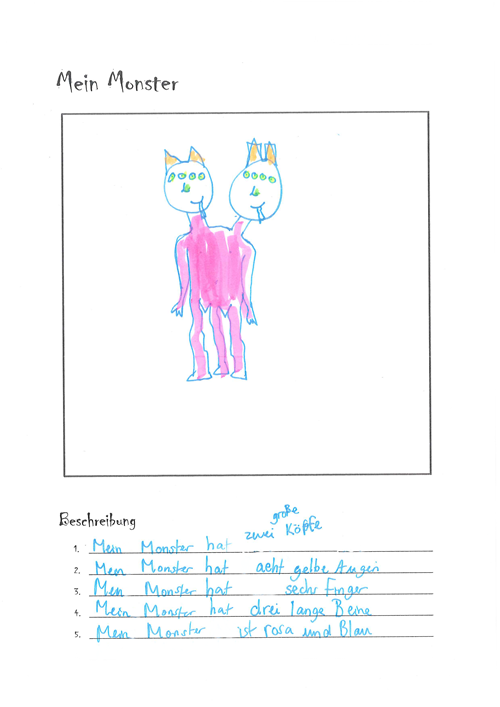By the end of year 6, students use written and spoken German for classroom interactions, to carry out transactions, and to share ideas and opinions, relate experiences and express feelings. They use complete sentences in familiar contexts to ask questions such as, Bist du fertig? Was machst du jetzt? Verstehst du das? respond to requests and share experiences of learning, for example, Ich kann gut sprechen, aber ich finde das Lesen und Schreiben schwierig. They use descriptive and expressive vocabulary, including adjectives such as aufgeregt, glücklich, nervös, sauer and traurig, to express feelings and make statements such as Ich nehme ein Käsebrötchen. They use appropriate intonation for simple statements, questions and exclamations, and correct pronunciation, for example, for the two different pronunciations of ch. They gather and compare information from different sources about social and natural worlds, and convey information and opinions in different formats to suit specific audiences and purposes. They describe characters, events and ideas encountered in texts, and re-create imaginative texts to reflect their imaginative experience. When creating texts, they manipulate modelled language to describe current, recurring and future actions, for example, Wir gehen morgen schwimmen. Kommst du mit? Es geht mir nicht gut. and produce original sentences with common regular and irregular verbs in the present tense, including limited forms of the modal verbs dürfen and müssen and some common separable verbs such as mitbringen and fernsehen. They use adjectives, adverbs and adverbial phrases to qualify meaning, for example, viel Wasser, neue Schuhe; lieber, oft, jeden Tag. They explain aspects of German language and culture, recognising that there are not always equivalent expressions in English, and create a range of bilingual texts to support their own language learning and the school community. They describe aspects of their intercultural interactions that are unfamiliar or uncomfortable, and discuss their own reactions and adjustments.
Students give examples of how German language and culture are continuously changing and are influenced by other languages and cultures. They identify and apply some of the systematic sentence structure and word order rules of German. They identify rules for pronunciation and apply phonic and grammatical knowledge to spell and write unfamiliar words, for example, words containing ch, j, w and z, and diphthongs such as au, ei, eu and ie. They apply the conventions of commonly used text types, and identify differences in language features and text structures. They give examples of the variety of ways German is used by different people in different contexts. They make connections between culture and language use, and identify ways that language use is shaped by and reflects the values, ideas and norms of a community.





